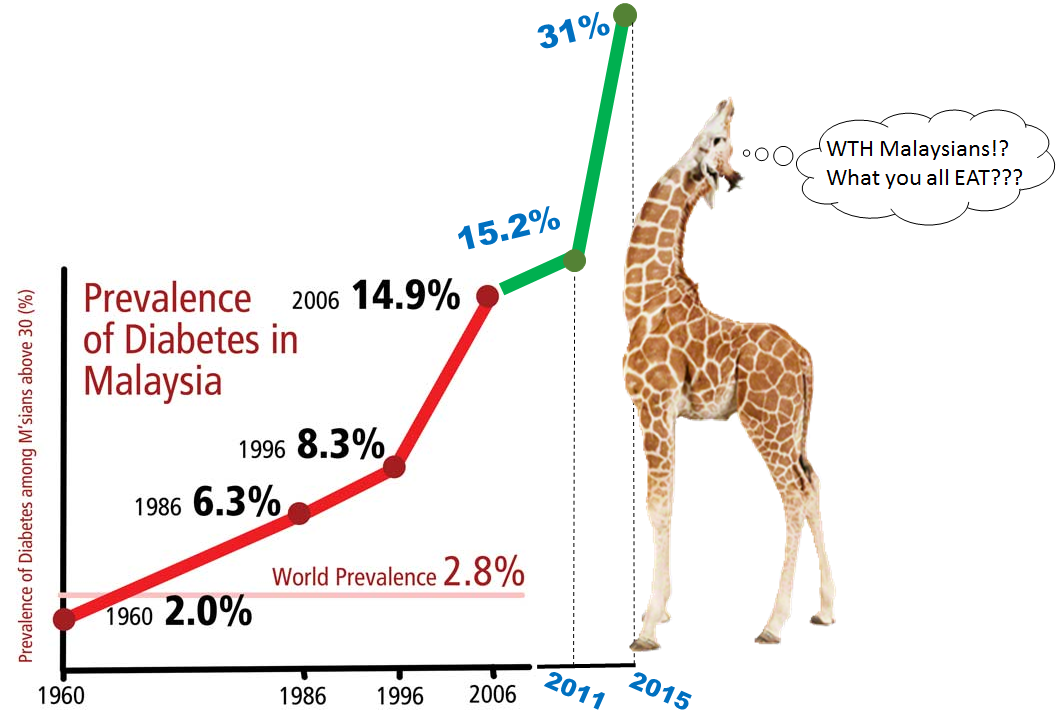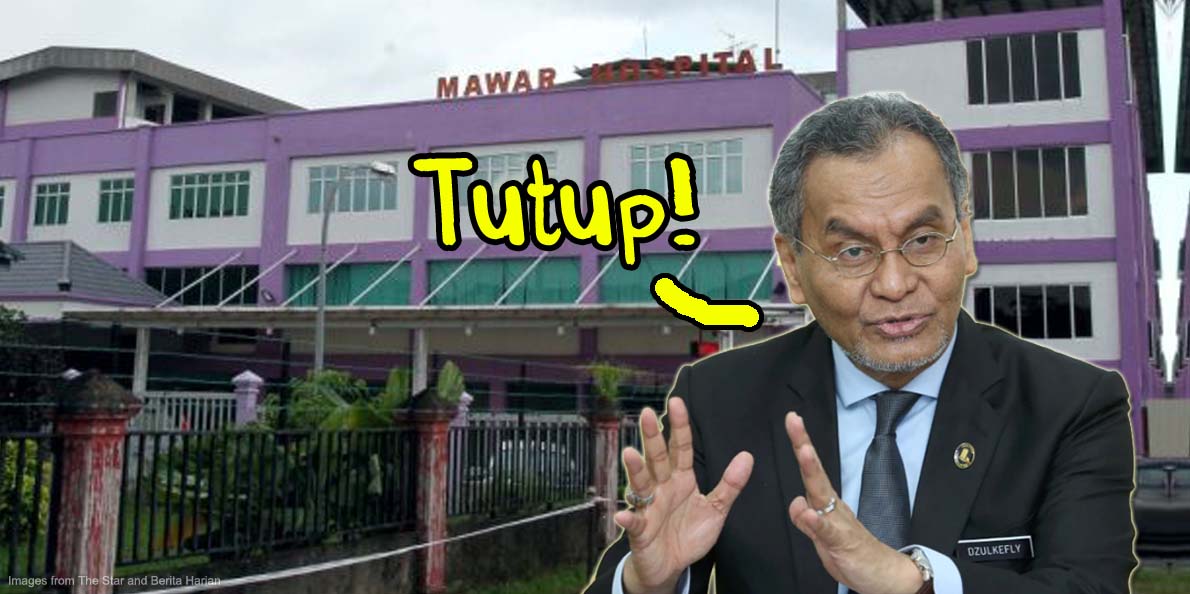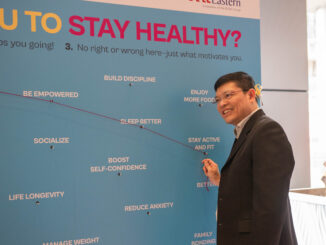100,000 Malaysians will be on dialysis by 2020. Here’s how we can prevent this

- 21.8KShares
- Facebook21.3K
- Twitter30
- LinkedIn44
- Email54
- WhatsApp338
With so many robot, AI movies being released, you might think, how awesome if humans could function like these machines, or omg have bionic body parts! Can lift a double-parked car and throw into the longkang, can fast charge for 1 hour instead of sleep.
But being dependent on a machine for life is not awesome. This is the fate of people with end-stage kidney failure (ESRF). It’s when their kidneys are so damaged, that the two bean-shaped organs function below 10%-15% their normal capacity. So they depend on two needles inserted into their arms, connected to a machine, drawing out their blood, before returning it into the body, for 4 hours at a time, 3 times a week. This is dialysis. Without dialysis treatment, people with ESRF have only WEEKS to live.

Unfortunately, the number of Malaysians with this condition is rising. There are currently around 50,000 patients on dialysis, according to consultant nephrologist Dr. Thiruventhiran Thilaganathan, from Sunway Medical Centre.
“The latest statistics show that there are about 7,000 new patients entering the dialysis programme on a yearly basis. This represents a 10%-15% growth. So, it is projected that by 2020, the total number of patients will be close to 100,000.” – Dr. Thiruventhiran, consultant nephrologist at Sunway Medical Centre, Star2
61% of Malaysian ESRF patients is due to diabetes. One of the highest in the world

Malaysians are uncomfortably too familiar with diabetes, perhaps because there are 3.6 million of us who have the disease. Even freakier, there could be another 1.8 million who have it, but just don’t know because they never went for health screening. 😕 Diabetes cases are on the rise due to our unhealthy eating habits (using too much sugar and oil. yumm).
And the number one cause of the kidney disease requiring dialysis now in this nation is diabetes. You could say they go together like horse and cart.
“And unfortunately, we are world leaders as far as diabetes-related kidney failure is concerned. In fact, 61% of all patients with ESRF in Malaysia is due to diabetes, which is a very large number and is one of the highest in the world at the moment.” – Dr. Thiruventhiran, Star2

Dialysis is divided into 2 types:
Hemodialysis uses a machine and a filter to remove waste and water from the blood. A patient’s artery is hooked to a tube and his/her blood is drawn into a filtering machine that cleans it. After the cleaning process, the machine sends the clean blood back into the person’s body. This needs to be done 3 times a week for a moderately healthy person. But this can come with complications like infections and low blood pressure.
Peritoneal dialysis is a tube inserted into the peritoneal cavity (pic below) – the cavity which contains the stomach, liver and intestines. Then, dialysate fluid which consists of purified water, glucose and electrolytes is dripped into the cavity. After a few hours, the fluid with its wastes are drawn out. This kind must be done daily.

Dr. Thiruventhiran, who is also the vice-chairman of the National Kidney Foundation (NKF), notes that 1 in 5 patients with diabetes will end up with kidney disease, aka diabetic nephropathy. It is so major an issue in this country, that we have a National Kidney Foundation. Have you ever heard of a National Appendix Foundation? No.
So how does diabetes lead to ESRF? We all know our kidneys’ job is to filter out waste as urine. When we have high levels of blood sugar, our kidneys work overtime to do their filtering, which, over time, can damage them. But not everyone with diabetes develops kidney disease. And not every kidney disease case is the result of diabetes – it can also be caused by high blood pressure, kidney stones and some cancers, kidney infection, even old age and so on.

Many ESRD patients talk of the regret of not changing their lifestyle when they had the chance and how life after ESRD is challenging to adapt to.
“I love to eat sweet things. That was before I had diabetes. But now it’s too late. I have to be strong to do dialysis if I want to get on with life.” – Muhammad Nohi Omar, 45, TMI
“Prior to my condition, it was easy for me to cook and do household chores. But now, I tire easily and find it doing chores difficult. What’s even sadder is that my husband has had to quit his job to look after me and help with the cooking, cleaning and other household duties.” – Chew Keng Poh, 53, an ESRF patient on dialysis, NST

The difficult thing about ESRF is not being able to recognise the symptoms until the damage is irreversible, because early on there are usually none. Or else the symptoms can be nonspecific, meaning they can also be caused by other illnesses. The nationalkidneycenter.org has info about how you might catch a few signs in Stage 1 and 2 of kidney failure:
- Physical symptoms. Usually few or none that you can feel (other than those you may experience if you have heavy quantities of protein in urine).
- Blood work. Get a creatinine blood test. Results will show abnormalities, mainly a slightly elevated serum creatinine, though by the time this occurs, the person may already have lost 50% of kidney function.
- Urine test. Urine will show abnormal levels of protein, or could even contain blood.
- Blood pressure. Some people start having high blood pressure even in early ESRF.
- Anemia. Anemia may rarely occur at this stage. In this case, it is most often caused by having heavy protein content in urine rather than actual chronic renal insufficiency.
Click to know more about symptoms Stage 3 and 4, and Stage 5. For those who are already at the end stage, as mentioned, their life consists of being up to the dialysis machine 4 hours at a time, 3 times a week. If this is what you DON’T want to happen…
This is what you can do if you don’t want your kidneys destroyed

In order to love your kidneys better, here are some steps you can take:
- Reduce sugar and fat. Like we mentioned, 61% of ESRF cases here occur because of diabetes, so many Malaysians can benefit from having a better diet. While you’re at it, try to cut down on salt and caffeine as well.
- Drink enough water. This is the most important step in keeping kidneys strong.
- Stop smoking. Smoking can worsen kidney disease, diabetes and high blood pressure.
- Lose some weight. Being overweight means kidneys have to work harder to filter out toxins and obesity has been linked to an increased risk of kidney cancer. And don’t forget to exercise regularly, which helps lower high blood pressure.
- Take daily probiotics. Probiotics (good bacteria) help your kidneys process waste materials and contribute to overall digestive health.

Kidney disease costs Putrajaya RM1.6 billion annually. Treatment for an ESRF patient costs RM40,000 a year (it’s almost enough to buy the new Myvi!) and with 40,000 patients seeking treatment last year, the government is feeling the weight of the burden to treat a disease that doctors say can be managed with early treatment and care.
In our previous article, we wrote that the Government offers RM600 subsidy per month for ESRF patients which can be applied through the Ministry of Health (MOH). It’s for all Malaysians, however a nurse told The Star that Muslims can also apply through Baitulmal or zakat. Without the subsidy, dialysis is actually pretty steep – if a patient were to get treatment from an NGO or private hospital, it can cost between RM150 to RM250 per session.
A patient would pay RM2,400-RM3,150 per month with the subsidy, or RM3,000-RM3,750 per month without it. (Or RM2,756 without subsidy or RM2,106 with, for 13 treatments a month, according to The Star). That’s practically like changing new smartphone every month. ?
DOWNLOAD MOH FORM HERE

Amazingly, we learned that Sungai Buloh Hospital charges RM13 for a dialysis session!! Why so cheap? Because compassion.
“We never turn a patient down. Dialysis treatment is the one hope they have to live. If they need a medical report for treatment at other dialysis centres, we will also prepare it for them.” – Dr. Jeevita Supayah, internal medicine specialist at the hospital, TMI
Chronic kidney disease develops slowly over many years and usually cannot be reversed. If we don’t want to see Malaysia hit the 100,000 mark, we’re gonna have to do something about it. To take a word of advice from the patients with ESRF, don’t live in regret… try to change your lifestyle and your diet before it’s too late.
- 21.8KShares
- Facebook21.3K
- Twitter30
- LinkedIn44
- Email54
- WhatsApp338



